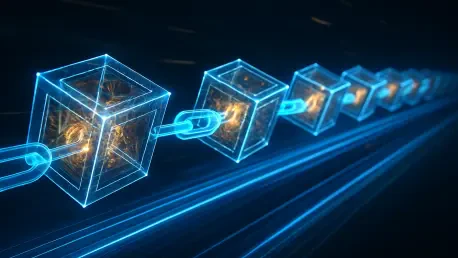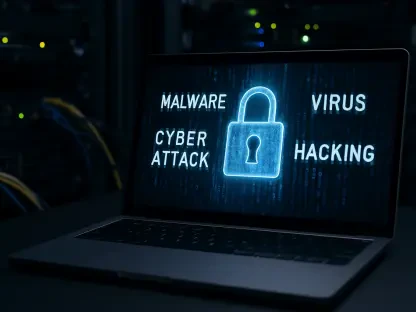In a world where digital transactions are becoming the backbone of global economies, the race for blockchain networks to achieve unparalleled speed and scalability has never been more critical, and Solana has just thrown down a remarkable gauntlet by surpassing 100,000 transactions per second (TPS) in a recent stress test on its mainnet. This achievement, a first for any major blockchain under such conditions, has sparked intense discussions within the tech and crypto communities about whether Solana can truly redefine what speed means in the decentralized space. While this milestone showcases the network’s theoretical potential, it also raises questions about real-world applicability and the challenges of translating controlled test results into everyday performance. As blockchain technology continues to evolve, Solana’s breakthrough offers a glimpse into a future where decentralized systems might rival the efficiency of traditional financial infrastructures, setting the stage for a deeper exploration of its capabilities and limitations.
Breaking Barriers with 100K TPS
Solana’s recent stress test on its mainnet marked a historic moment as the network achieved over 100,000 TPS, a figure that positions it as a frontrunner in the blockchain speed race. Reported by industry experts, this peak was recorded within a single block containing over 43,000 successful transactions, with only a small fraction failing. However, this impressive number comes with a caveat: the test utilized lightweight “noop” program calls rather than complex, real-world transactions like payments or decentralized app interactions. While this demonstrates Solana’s raw capacity under ideal conditions, it also highlights the gap between theoretical performance and practical usage. Developers might theoretically push 80,000 to 100,000 TPS for simpler tasks, but the test’s controlled environment leaves open the question of how such speeds can be sustained when faced with diverse and unpredictable user demands in live scenarios.
Digging deeper into this milestone, the achievement underscores Solana’s architectural strengths, particularly its ability to handle high transaction volumes without buckling under pressure. Unlike many blockchains that struggle with scalability, Solana’s design leverages parallel processing and a unique consensus mechanism to maximize throughput. Yet, this test also serves as a reminder of the broader challenges in the blockchain space, where raw speed must be balanced against security and decentralization. The community has celebrated this feat as evidence of Solana’s potential to support mass adoption, but skepticism remains about whether these numbers can translate into meaningful improvements for end users. As the network aims to close the gap between test results and real-world performance, this milestone acts as both a triumph and a call to action for further innovation and refinement in its infrastructure.
Real-World Performance Challenges
While Solana’s stress test results are undeniably impressive, the network’s day-to-day performance tells a different story, with average throughput hovering around 3,700 TPS based on recent data. However, this figure is significantly inflated by validator voting transactions, which account for roughly two-thirds of the total activity and do not reflect user-driven or economic interactions. When these consensus votes are excluded, the actual throughput for meaningful transactions drops to approximately 1,050 TPS, revealing a stark contrast to the 100,000 TPS peak achieved in testing. This discrepancy highlights a critical challenge: transforming theoretical capacity into practical utility. Additionally, much of Solana’s current activity is driven by speculative platforms like memecoin applications, which dominate network usage rather than representing a broad base of diverse economic activity.
Beyond the numbers, this gap between test and real-world performance points to systemic hurdles that Solana must overcome to fulfill its promise of high-speed blockchain operations. The dominance of niche applications in driving transaction volume suggests that broader adoption across varied use cases—such as payments, supply chain tracking, or decentralized finance—remains elusive. For Solana to bridge this divide, it must not only optimize its infrastructure for complex transactions but also attract a wider array of developers and businesses to build on its platform. The current reliance on specific, high-volume applications limits the network’s ability to demonstrate versatility, raising questions about whether its architecture can support a truly global, decentralized ecosystem. Addressing these challenges will be crucial for Solana to move beyond impressive test results and establish itself as a reliable backbone for everyday digital interactions.
The Alpenglow Upgrade: A Game Changer?
On the horizon for Solana is the proposed Alpenglow upgrade, a transformative update currently under validator voting that aims to revolutionize the network’s consensus mechanism. By replacing the existing TowerBFT system with a faster, off-chain voting protocol, Alpenglow seeks to slash block finality times from 12.8 seconds to a remarkable 100-150 milliseconds, aligning Solana’s performance closer to traditional web infrastructure speeds. Developed by a dedicated research team, this upgrade introduces direct voting and signature aggregation to finalize blocks more efficiently, significantly reducing network load and bandwidth costs. Supporters argue that such enhancements could unlock unprecedented scalability, positioning Solana as a serious contender against centralized financial systems. However, the true impact of this upgrade hinges on its ability to maintain stability while handling real-world transaction demands.
Despite the optimism surrounding Alpenglow, the proposal has ignited debate within the Solana community over its potential risks and implications. A key point of contention is the introduction of a burned fee, known as the Validator Admission Ticket (VAT), designed to offset inflation but criticized for possibly excluding smaller validators and risking network centralization. Alternative fee structures have been suggested to address fairness concerns, yet uncertainties persist about how off-chain voting will integrate with existing systems and whether sufficient testing can mitigate unforeseen issues. The voting process for this upgrade, requiring strong community consensus, underscores the delicate balance between innovation and inclusivity. As discussions unfold, the outcome of Alpenglow’s approval will likely shape Solana’s trajectory, determining whether it can achieve groundbreaking speed without compromising the decentralized ethos that defines blockchain technology.
Navigating Future Scalability and Community Consensus
Looking ahead, Solana stands at a pivotal juncture where its push for higher performance must be carefully weighed against practical limitations and stakeholder concerns. The 100,000 TPS milestone, though achieved in a controlled setting, signals the network’s immense potential to lead in blockchain throughput. Yet, the significant disparity with real-world figures, averaging around 1,050 TPS for meaningful transactions, emphasizes the need for sustained efforts to translate test successes into everyday usability. The community’s response to infrastructure upgrades will play a critical role in this evolution, as will the ability to diversify transaction types beyond speculative applications. Solana’s journey forward requires not just technical advancements but also strategic initiatives to broaden its appeal and utility across industries.
Reflecting on the path traveled, Solana demonstrated unparalleled transaction capacity during testing and maintained a solid, though lower, real-world performance that outpaced many competitors. The debates sparked by proposed changes like Alpenglow revealed a community deeply invested in balancing speed with accessibility. Moving into the next phase, stakeholders should focus on fostering inclusive dialogue to refine fee structures and ensure rigorous testing of new protocols. Collaborative efforts to expand use cases and attract diverse developers could further solidify Solana’s position. Ultimately, the decisions made in the wake of these milestones and proposals will determine whether the network can achieve a harmonious blend of efficiency and decentralization, setting a new standard for blockchain technology.









